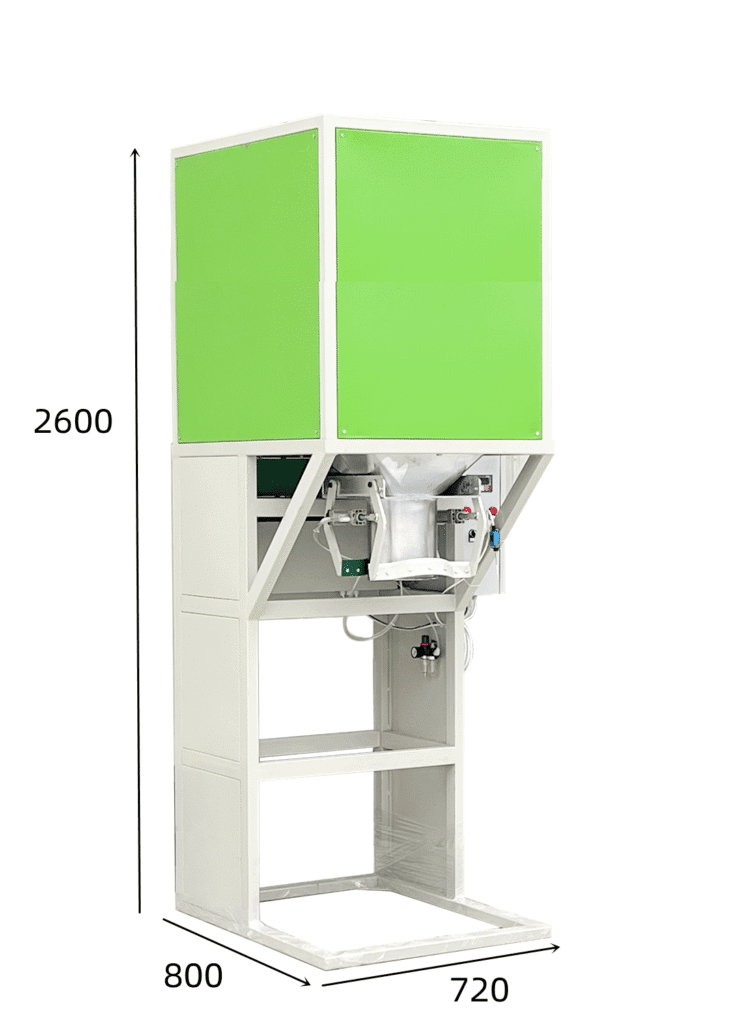Granule Packaging Machine Costs & Essential Maintenance to Prevent Failures
Granule packaging machines are critical for industries handling materials like plastics, pharmaceuticals, and agricultural products. Regular maintenance not only extends equipment lifespan but also prevents costly downtime. Below, we analyze pricing and outline a proactive maintenance framework to ensure operational safety and efficiency.
Granule Packaging Machine Pricing Overview
Equipment costs vary by speed and precision:
- Basic semi-automatic: $3,000–$65,000 (20–50 bags/hour)
- Mid-range automated: $70,000–$140,000 (60–120 bags/hour)
- High-speed systems: $150,000+ (200+ bags/hour, IoT-integrated)
Chinese manufacturers typically offer 25–40% cost savings compared to European brands, with ISO 9001-certified quality and 4–6 week lead times.
4 Critical Maintenance Practices to Eliminate Risks
1. Cleaning & Lubrication
- Weekly tasks:
- Degrease chains and conveyors with food-safe solvents.
- Lubricate bearings with ISO VG 68 oil (5–10 drops per port).
- Monthly tasks:
- Clean dust from load cells and optical sensors using compressed air (<30 PSI/2 bar).
- Apply high-temperature grease (±350°F/177°C) to sealing jaw sliders.
Impact: Reduces friction-related failures by 60–70%.
2. Wear-Part Inspection & Replacement
| Component | Replacement Interval | Failure Risk if Neglected |
|---|---|---|
| V-belts | 6–12 months | Motor overload, abrupt shutdowns |
| Silicone seals | 3–6 months | Granule leakage (5–8% material loss) |
| Auger flights | 12–18 months | Inconsistent dosing (±2–5% deviation) |
Pro Tip: Stock spare parts kits to cut repair downtime by 80%.
3. Calibration & Adjustment
- Weight accuracy:
- Recalibrate using certified 25 lb (11.3 kg) test weights monthly.
- Adjust feed auger RPM to match material flowability (e.g., 15–30 RPM for pellets vs. 8–15 RPM for flakes).
- Sealing parameters:
- Optimize temperature (300–400°F/149–204°C) and pressure (10–20 PSI/0.7–1.4 bar) based on film thickness.
Case Study: A pet food producer reduced giveaway costs by $18,000/year through biweekly calibration.
4. Safety System Verification
- Daily checks:
- Test emergency stops (response time <0.5 seconds).
- Confirm light curtains detect obstructions within 2″ (50 mm).
- Quarterly audits:
- Replace worn guard rails and interlock switches.
- Validate noise levels <75 dB(A) per OSHA 1910.95.
Maintenance Schedule Template
| Frequency | Tasks | Tools Required |
|---|---|---|
| Daily | Visual inspection, sensor cleaning | Air blower, lint-free cloths |
| Weekly | Lubrication, belt tension check | Grease gun, tension gauge |
| Monthly | Load cell calibration, seal inspection | Test weights, thermal camera |
| Quarterly | Motor alignment, electrical safety test | Laser aligner, multimeter |
Cost of Neglect vs. Proactive Care
| Scenario | Reactive Repair Cost | Preventive Cost | Savings |
|---|---|---|---|
| Motor burnout | $8,000–$12,000 | $200 (bearing swap) | 97–98% |
| Conveyor belt snap | $5,000 (downtime) | $150 (belt replacement) | 96% |
| Seal failure | $3,500 (product loss) | $50 (preventive seal kit) | 98.5% |
Why Chinese Machines Excel in Maintainability
- Modular designs: Replace augers or hoppers in <30 minutes.
- Standardized components: Use globally available parts (ASA/ANSI compliance).
- Smart diagnostics: QR codes on machines link to repair tutorials.
Implementation Tips
- Digitize records: Use CMMS (Computerized Maintenance Management Systems) to track service history.
- Train cross-functional teams: Empower line operators to perform basic lubrication and inspections.
